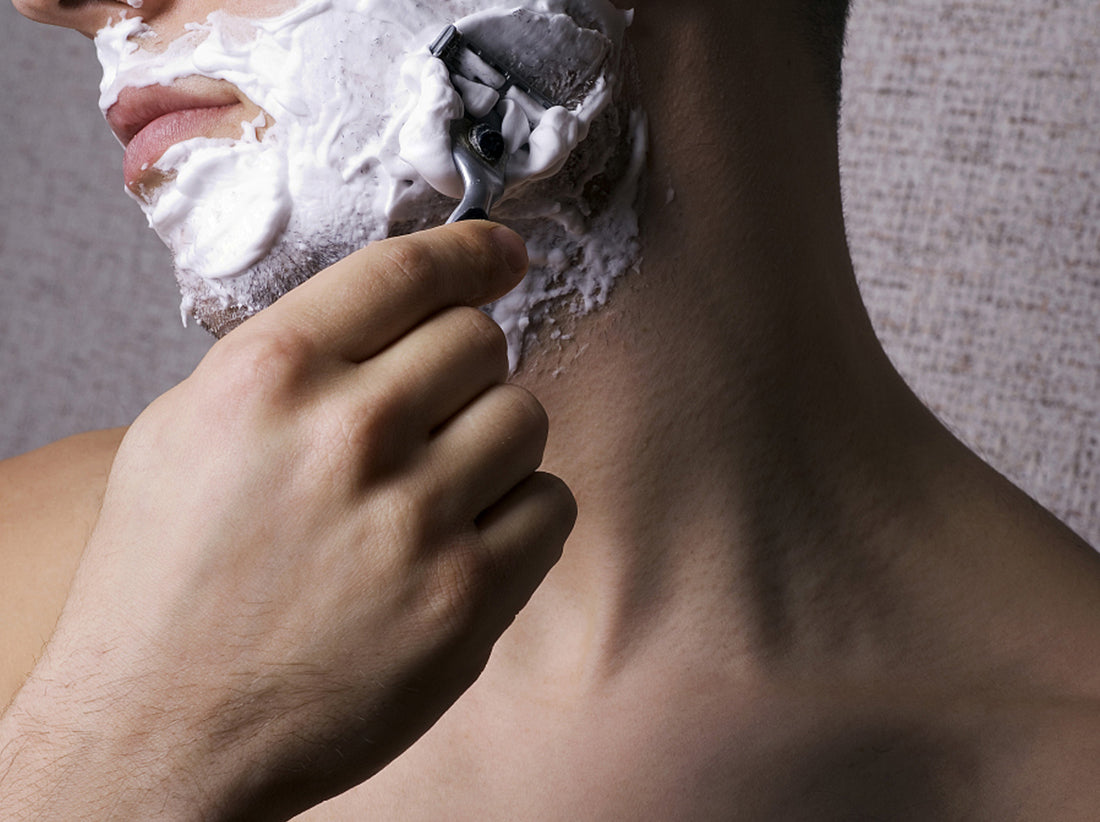
How To Build The Perfect Shaving Lather: A Step By Step Guide
Share
Getting the perfect consistency of lather on your face can be a difficult part of the wet shaving experience as there are a few factors that come into play.
Brush Type
Different brushes will work up a lather differently. Natural hair such as boar and badger hair brushes absorb water, which is why they are soaked prior to use.
Boar hair is quite stiff and will agitate the surface of the soap more, collecting more soap, but can be uncomfortable on the skin.
Badger hair is usually considered the best type of brush (though there are many grades) as it is very soft and full, good for creating a thick lather but you may need to spend longer on harder soaps.
Synthetic hair brushes can vary greatly in quality but many these days can give badger a run for its money. Synthetics don’t need soaking as they won’t absorb water but this can require more water management.
Water Type
This is often the biggest factor in building a good thick lather (other than soap quality).
Hard water usually has a lot of calcium and magnesium in it which reacts with the soap in a way that makes it difficult for lather to generate. Soft water on the other hand does not have this problem.
If you find that you are really struggling to build anything worth shaving with it is worth checking your water hardness.
The solution can be to install a water softener, which will be expensive, or some people get good results from using distilled water however it can be a pain as you will have to warm up the distilled water ready for your shave.
If neither of these options appeal then you will have to persevere and work on your technique. It is still possible to generate lather but it may take longer and you may find that certain soaps are simply not suited to your water type. That is where experimentation and trying different brands comes in!
Soaps and Creams
All soaps are different and everyone will find those that they find easiest to work with and give the best results. For example, some are well suited to hard water despite its difficult lathering properties.
Creams on the other hand tend to be a lot easier to lather, even in hard water conditions, however they are also usually more expensive when compared to soaps and don't last as long.
Technique
The area we are going to be working on. Even here there is no perfect formula that works for all. Everyone has their own preferences and methods that work for the tools and conditions they’re in.
For example, you don’t have to be constrained to a shaving bowl. A lather is most typically built in a bowl or mug but you can also use your hand and even just build it up right on your face.
Building it in the hand or on the face can be messy but the tactile feedback it provides can make it easier to determine when it is just right.
Below we will go through each method in detail as well as outlining some extra steps you can take to have a more pleasurable lather.
Bowl or mug method
1. Place your bowl or mug in hot water then drain once warmed up. If you are going to take a shower first, leave your bowl sitting (not submerged) in hot water to retain heat. This isn’t essential it just means that when you build the lather in the bowl it is nice and warm when rubbing it on your face.
2. Place soap in bowl with a few drops of warm water and leave to soak for a few minutes. If you are using a natural hair brush such as boar or badger, leave it to soak in warm water for a few minutes so it can absorb and retain moisture (perfect time to jump in the shower).
3. Drain bowl of water
4. Let excess water drip off brush. If using a synthetic hair brush you can don’t need to have pre-soaked it but can just rinse it under warm water and then gently shake or let drip most of the excess water off. The idea is to get the brush damp but not wet. The same applies to natural hair brushes once soaked, allow to drip most of the excess off.
5. Work the tips of the brush on the soap in a circular motion for at least 30 seconds until you can see the brush is fully loaded with soap. Depending on the soap, by this point you may already have a workable lather or you may find that if you were to rub it on your face it would be quite thick and possibly paste-like. If it is very foamy and dissipates quickly when applied you may have added too much water but that’s ok, you can skip to step 7 or if it is far too watery then you may need to work it on the soap for longer until it thickens up.
6. Check consistency of lather. Assuming you now have a thick lather it may either be ready - try it on your face and see if you like the consistency - or quite paste-like, in which case remove the soap from the bowl and add a couple of drops of water (to the bowl).
Hand or face method
6. At this point you can skip working the lather in the bowl and instead work it in your hand (either flat or slightly cupped, depending on preference) or on your face.
7. Keep working until you get a thick and creamy meringue-like lather. The type of brush, soap or water hardness will determine how long this takes so the idea is to keep adding water a couple of drops at a time (either into the bowl or on your hand or into the centre of the brush if working on your face)
Tip - When it looks like things are going well you can gently squeeze the brush at the bottom which will result in a thicker lather sitting on the top of the brush. Now incorporate it into the rest of your lather by working it in.
Tip - Feel free to vary from circular motion to side to side and even an up and down pumping motion can help.
Tip - Never press the brush too hard so that the bristles completely splay out. This can cause individual bristles to snap and over time can create a dip in the centre of the brush where most of the pressure has been applied.
8. Once the lather is looking extra creamy apply to your face in a circular motion to exfoliate the skin and lift the hairs, priming them for shaving.
Tip - Some like to then apply the lather in a painting motion to give a nice even coating. Try to paint against the direction of hair growth so as to keep the hairs raised and ready for shaving.
Still having trouble whipping up a decent lather? Try using some distilled water to see if is the water hardness that makes a difference. In the mean time, try building the lather on top of the soap rather than taking it out in step 6. This is quite a heavy-handed approach as you will be loading the brush a lot more thereby giving you more chance to create a lather however it will reduce the life of the soap due to the increased load.
In Summary.
Regardless of method, the same principle applies:
Whip up a lather with your shaving soap or cream using a damp shaving brush, adding a drop or two of water at a time, until the desired consistency is reached.
Practice makes perfect.
